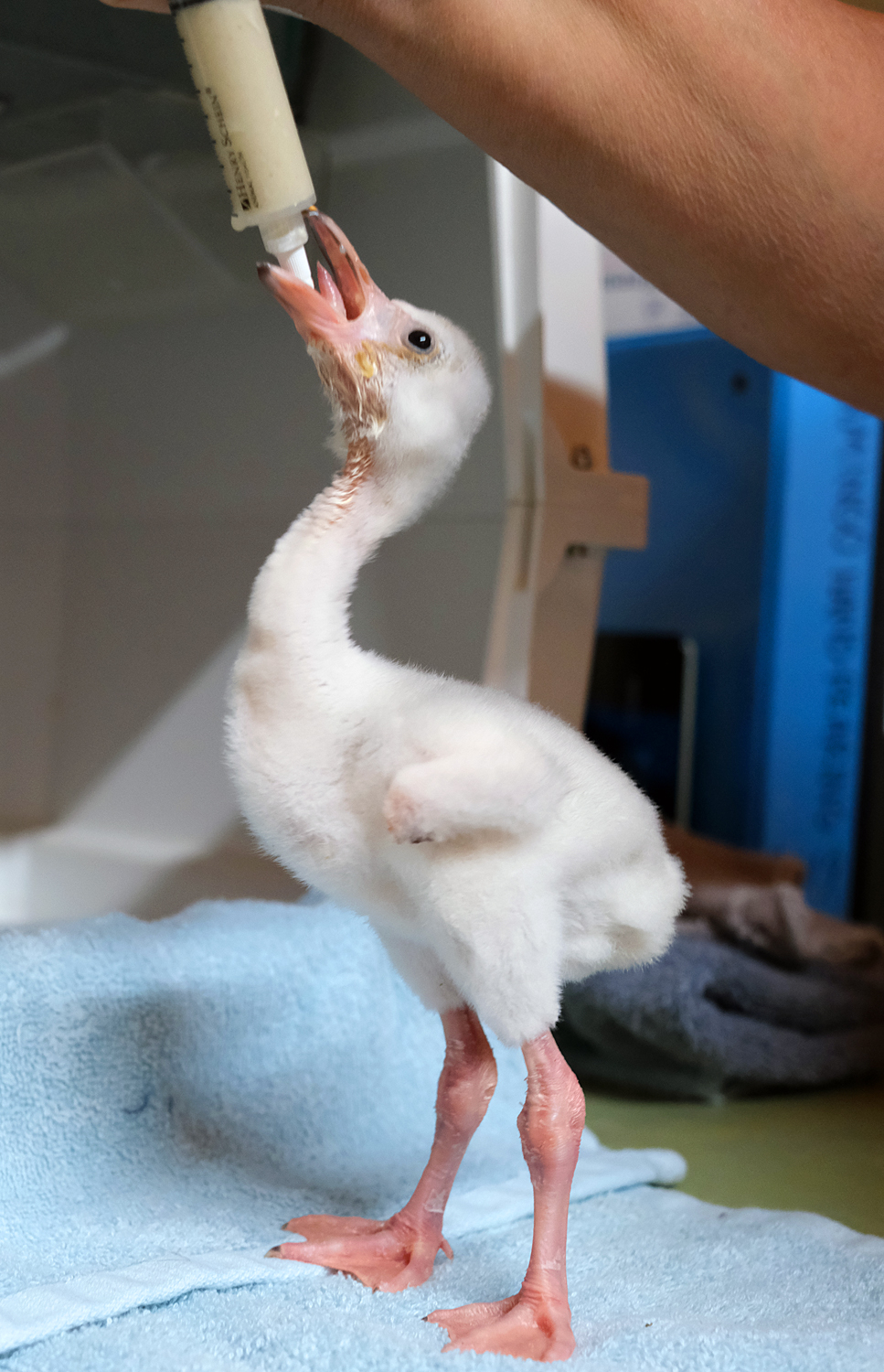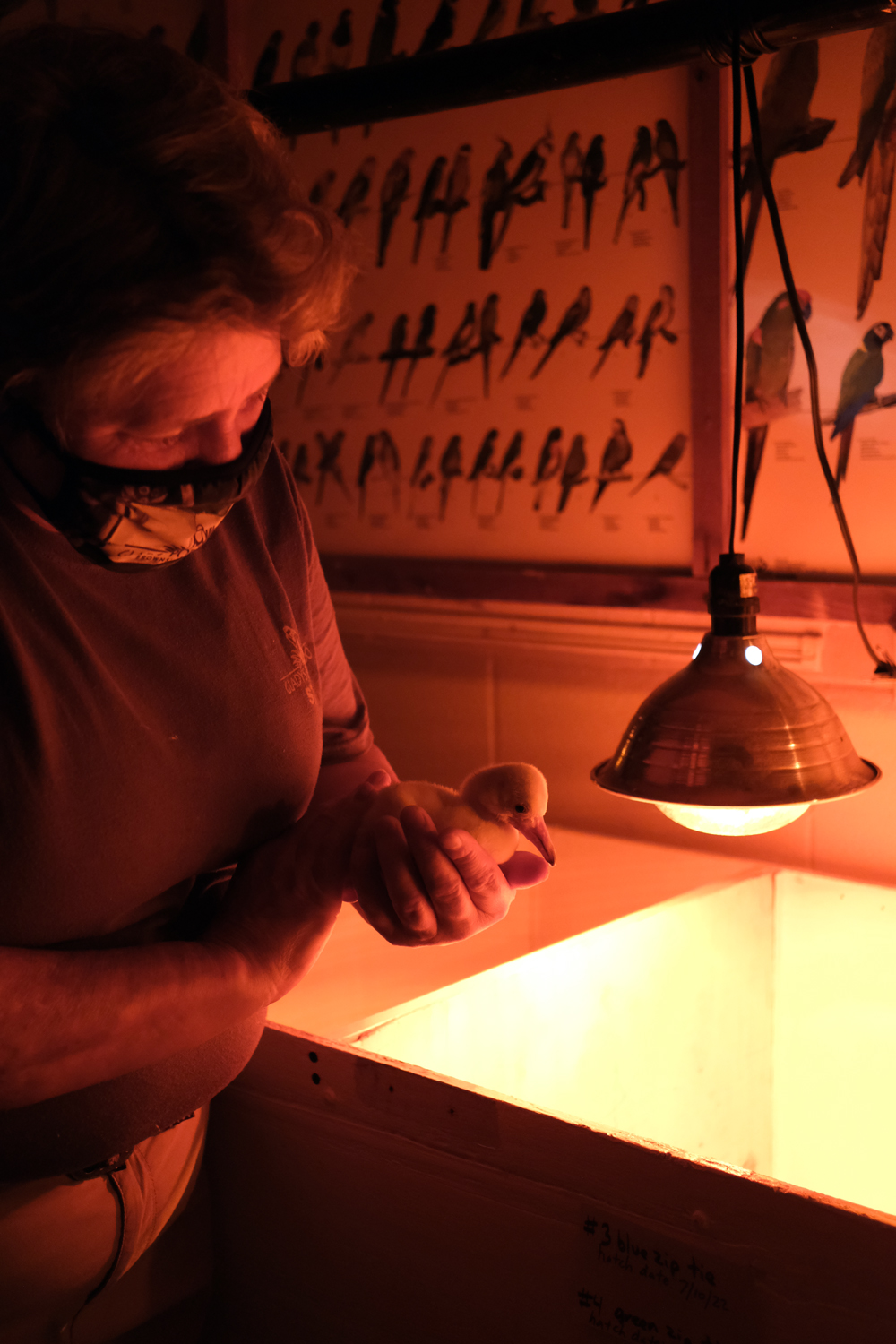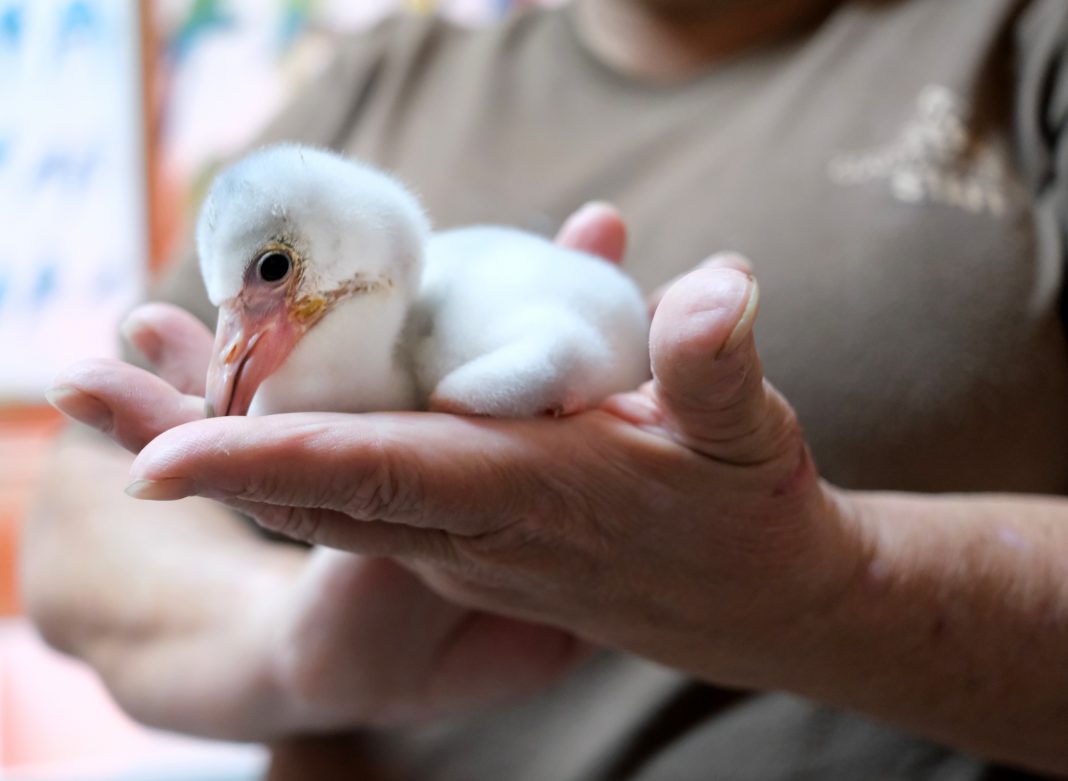By OMAR E. ZAPATA
Visitors to Gladys Porter Zoo will soon see new Caribbean flamingos added to the Tropical America zoogeographic area with four healthy babies hatching this month.
Two flamingo babies hatched on July 6 and the other two on the 10th and 12th. They are first a grayish white with their first set of feathers also being gray coming in about two to three months, Natalie Lindholm, Curator of Birds at the Gladys Porter Zoo, told the Herald.
“They’ll take up to a year, maybe almost two years to finally get pink.” Lindholm said.
Taking care of her first group of baby flamingos at the zoo in 2014, she said the birds will have cycles where they won’t have any eggs.
“We did in 2014 and then they kind of took a couple of years off and then we had some in 2018 and 19 and then during the pandemic, we chose not to let the flamingos have any eggs … just because of the whole staffing issues from back then,” Lindholm said.
This year when the flamingos started building their nesting mounds, the staff decided to let them ‘do what they’re gonna do’ and started laying eggs, she said.
With the flamingos having bands on them to identify them in the zoo’s registers, the four baby birds know exactly who their parents are and their full lineage in the zoo.
The baby flamingos were artificially incubated with wooden incubators, which Lindholm said hold moisture very well.
“(The baby flamingos are) just really tough,” she said. “Because you can get the fanciest German made incubator for other more delicate species but these guys, you can put them in the big old incubator, and they incubate and hatch out.”

The zoo also artificially incubated them due to the number of predators, like night herons in the area.
For the parent flamingos, they get to express their natural behavior for a while until the eggs are taken and are replaced with “dummy eggs” under them.
After the first 24 hours post hatching, the baby birds will absorb their yolks and it gives them their jumpstart to life.
“After that, we start feeding them some Pedialyte, about two or three times and then we start putting them on the formula,” Lindholm said.
For about the first week, they will be fed about five times per day and eventually drop down to four to three per day based on a weekly evaluation. The baby flamingos are fed a certain formula handed down through the years from a San Antonio zoo which was the first to publish the feeding formula. It is made up of ground up smelt, shrimp, Gerber rice baby food, hard-boiled egg yolks, vitamins and calcium, which is all blended together.
“Then we’ll start introducing the regular flamingo diet,” she said. “And then we like to try and just get them on eating that and by that time, they’ll be pretty tall, and pretty hungry, like all the time.”
Between two and three months, the baby flamingos will be about half the height that they will fully grow to.
Asked what the behaviors of a baby Caribbean flamingo consist of, Lindholm said, “They’re as independent as they can be for being little things that really can’t fend for themselves. But they won’t hesitate to nip … they’re pretty tenacious little characters.”

Not knowing what sex the baby birds are until they are a bit older to get their blood tested, she said in the next few weeks they will be able to send their blood samples and hopefully have a “little guessing party.”
Lindholm said the babies usually take about four months to get to a certain size for them to go out in the exhibit with the other flamingos. Before going bill first into the exhibit, they first are taken to a smaller area with a baby pool.
“Finally we have to cut the cord and let them go but we really do want to make sure they know their way around the exhibit and they know that there’s going to be these big birds coming at them and that they can kind of fend for themselves,” she said.
With Caribbean flamingos having a life expectancy of 50 years, Lindholm said the baby birds she is taking care of could potentially live beyond her lifetime.
“The fact that they will outlive me is satisfying to know that they’re, you know, the future,” she said. “It’s kind of in their hands. It’s like mind time travel sometimes to know that these guys here are going to be here at the zoo well beyond any of us and you just have a daily satisfaction of doing good animal care and raising up healthy babies.”
Hopefully with the baby flamingos being a certain size by October, the four-month mark, they will be introduced with their big flamingo family where zookeepers will make sure to keep an eye on them and make sure they are socializing well with the other adult birds.




